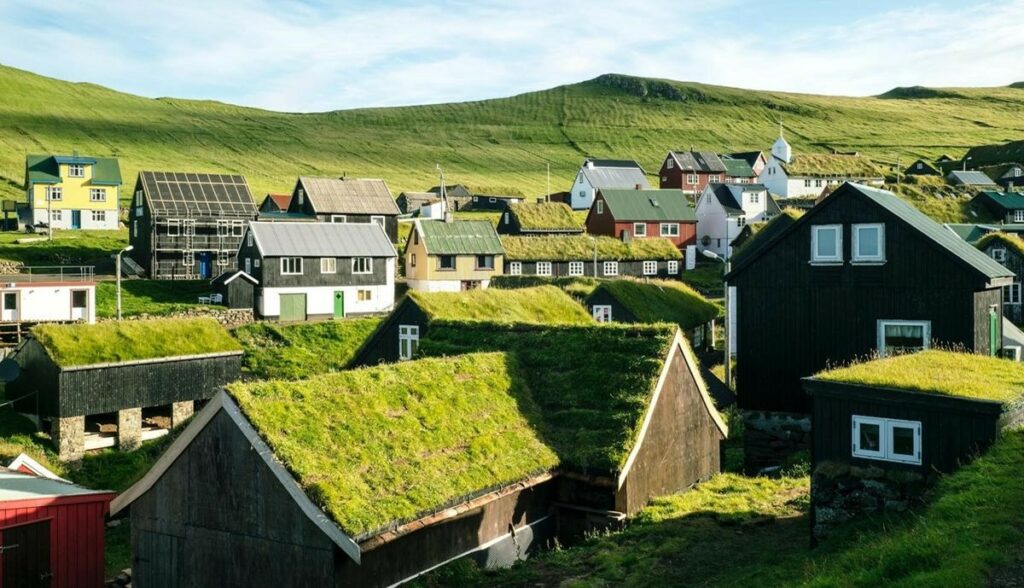As environmental conservation continues to be a critical concern, innovative ways of preserving the planet are constantly being explored. One such concept that has gained significant attention over the years is green roofing.
Being an architect with a focus on unique and sustainable structures (such as earthships), I’ve long been fascinated by green roofs. Already common in Europe, these living rooftops are starting to gain some acceptance in the United States. In this blog post, we’ll delve into what green roofs are, their practical uses, and also explain the different types of green roofs
What is Green Roofing?
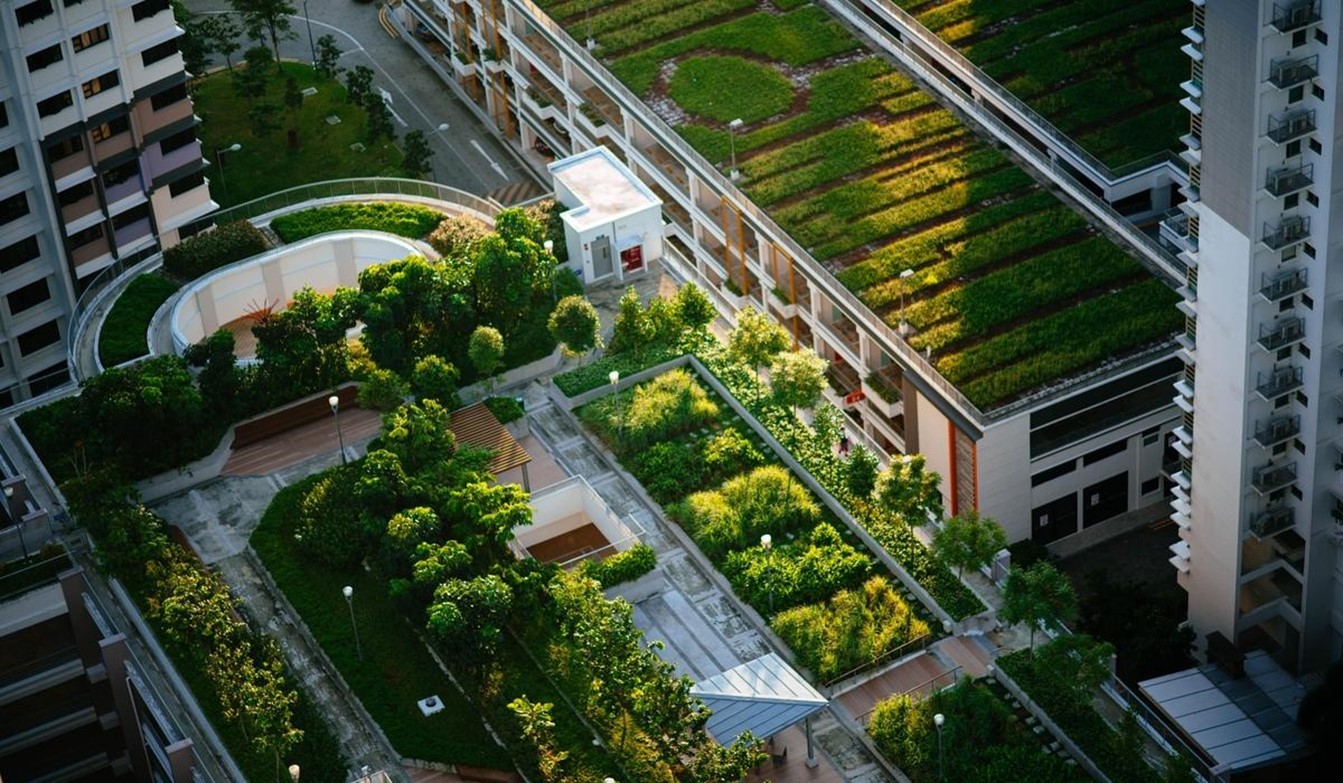
Green roofing, also known as living roofing, is a sustainable roofing solution that involves planting vegetation on rooftops. Green roofs can be planted with a variety of vegetation types, including grasses, wildflowers, and even trees, depending on the intended purpose.
Building a green roof involves installing several layers, including a waterproof membrane, insulation, and a growing medium where the vegetation grows. An attractive environmental effort, they are designed to mimic the natural environment with the intention of providing a habitat for flora and fauna.
History of Green Roofing
The concept of green roofing is not a new one; it has been around for centuries, with ancient civilizations such as the Vikings and the Babylonians using green roofs in their constructions.
However, the modern green roofing technology we know today began in Germany. It had its first traces in the 1880s and experienced major growth in the 1960s.
Green roofs in Germany were born in response to the country’s practice of roofing houses with highly flammable tar. In an attempt to reduce the fire hazard, a roofer named H. Koch added an underlying layer of sand and gravel to the components. This gradually became a waterproof, living rooftop. Sometime in the 1960s, this substrate of sand and gravel was replaced with a drainage system and an extensive green roof design.
While the Great Depression and World War II caused a sharp decrease in green roofing popularity, the green roof market expanded quickly in Germany in the 1980s. Since then, it has gained significant appeal around the world, with cities like Toronto, New York, and Chicago implementing green roof policies to promote sustainability.
What are the Benefits of Green Roofs?
Green roofs are not just a trend but a necessary step towards a sustainable future. They offer a range of practical benefits, including:
Reduce Urban Heat
One of the primary benefits of green roofs is that they reduce the urban heat island effect, where urban areas and structures trap heat and are thus much warmer than rural areas. The plants and soil on green roofs absorb and reflect heat, which lowers the overall temperature in the surrounding area. This reduction in temperature can have a significant impact on the energy consumption of buildings, as they require less air conditioning to maintain a comfortable indoor temperature.
Provide Natural Insulation
Green roofs also provide natural insulation, which can reduce energy consumption in buildings. The plants and soil on the roof act as a barrier, preventing heat from escaping during the winter months and keeping the building cooler during the summer months. This insulation can also reduce noise pollution from outside, creating a more peaceful living environment for the building’s occupants.
Environmental Conservation
One of the most significant benefits of green roofs is their positive impact on the environment. Apart from reducing the urban heat island effect, green roofs lower energy consumption and reduce carbon emissions. They also help to filter rainwater, reducing the load on drainage systems and preventing water pollution.
Reduce Stormwater Runoff
Green roofs can help manage stormwater runoff by absorbing and filtering rainwater and slowly releasing it back into the environment. This reduces the burden on city infrastructure and helps to prevent flooding and erosion.
Improve Air Quality
Green roofs help to improve the air quality in urban areas by filtering out pollutants and particulate matter. The plants on green roofs absorb carbon dioxide and release oxygen, making them a valuable tool in combating climate change.
Enhance Biodiversity
Green roofs provide a habitat for birds, insects, and other wildlife, which can help enhance biodiversity in urban areas. They also provide a space for urban gardening and urban agriculture, allowing people to grow their food in a sustainable way.
Improve Health and Well-being
Studies have shown that exposure to greenery and nature can reduce stress, anxiety, and depression and increase productivity and creativity. By providing a natural space in an urban environment, green roofs can help improve mental health and contribute to a better quality of life for residents.
Types of Green Roofs
There are four types of green roofs:
- Extensive
- Semi-intensive
- Intensive
- Bio-solar
Extensive Green Roofs
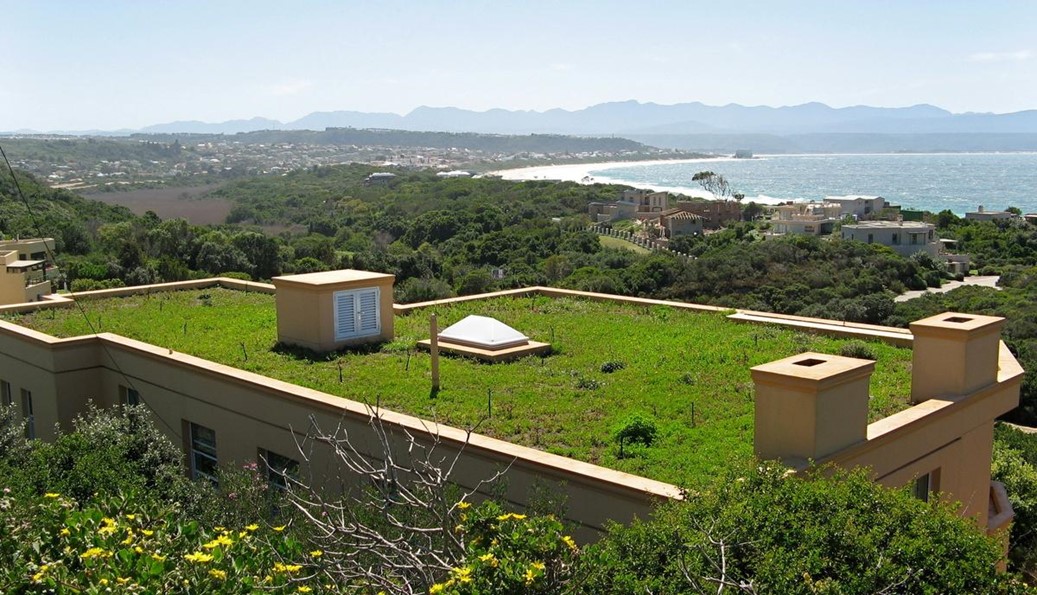
Extensive green roofs are the most common type of green roof. They are designed to be low-maintenance and lightweight, with a shallow soil depth of 2 to 4 inches. This makes them ideal for buildings with flat or slightly sloping roofs. They typically feature drought-resistant plants like succulents, herbs, and grasses and are used to improve insulation, reduce stormwater runoff, and mitigate the urban heat island effect.
Semi-Intensive Green Roofs
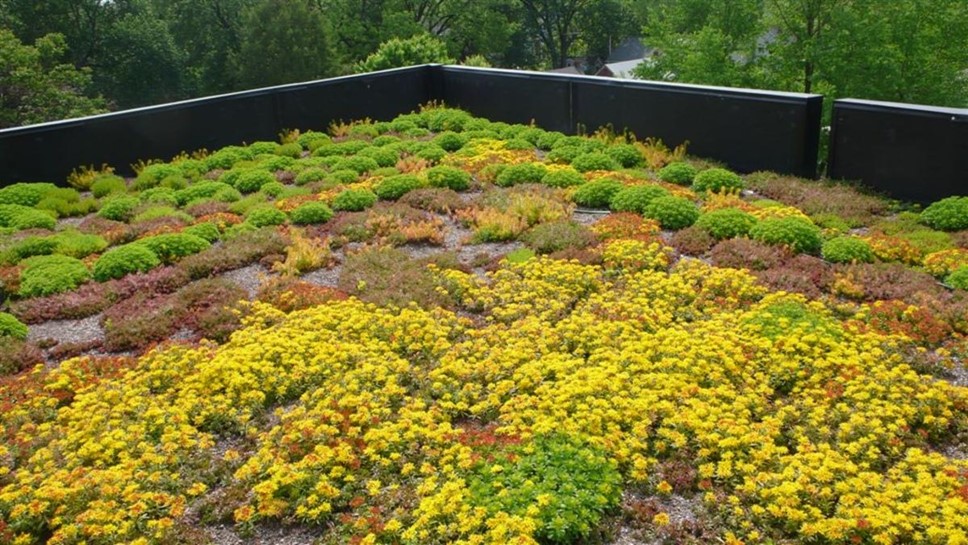
Semi-intensive green roofs are a hybrid between extensive and intensive green roofs. They have a deeper soil depth of 15–30 cm and can support a wider variety of plants, including shrubs and small trees. This makes them more aesthetically pleasing than extensive green roofs, however, they also require more maintenance. These roofs are often used in public spaces, such as parks or plazas, to provide greenery in urban areas.
Intensive Green Roofs
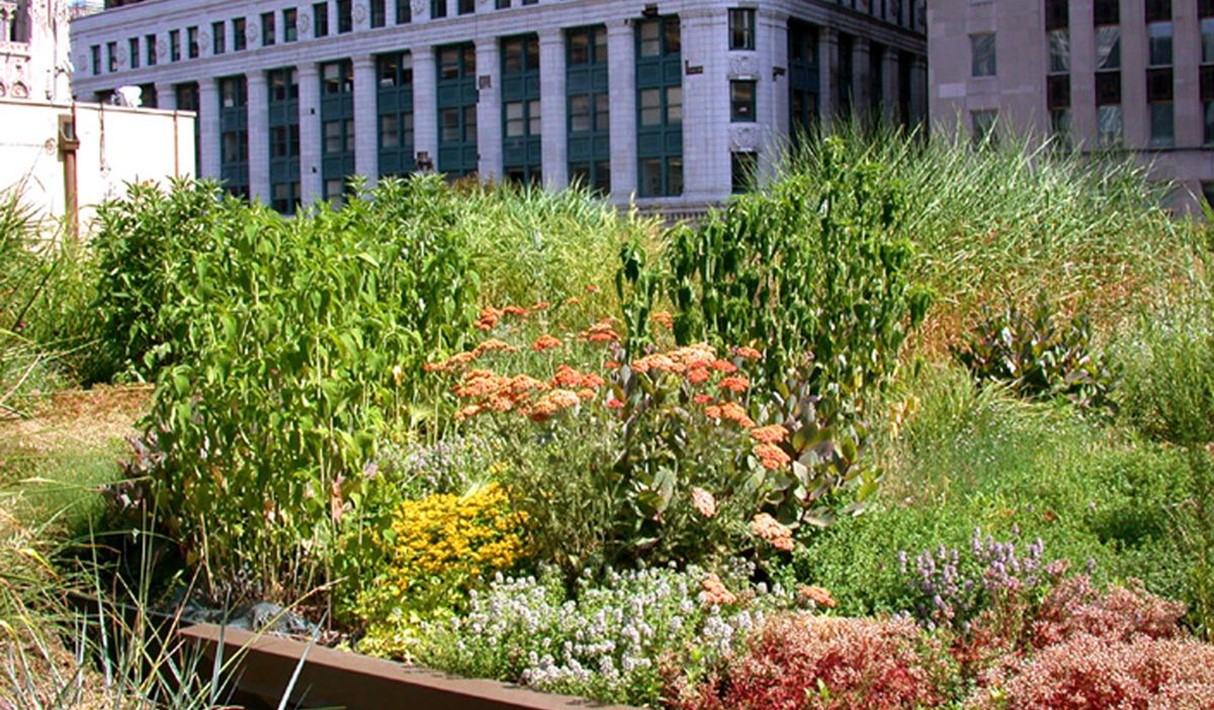
Intensive green roofs are the most complex type of green roof. They can have soil depths of over a metre and can support a wide range of plants, including larger trees, vegetables, and flowers. They require regular maintenance, including irrigation and fertilization, and can be used for recreational purposes like rooftop gardens or parks. However, due to their weight and maintenance requirements, these roofs are typically only used on buildings with strong structures and adequate load-bearing capacity.
Bio-solar Green Roofs
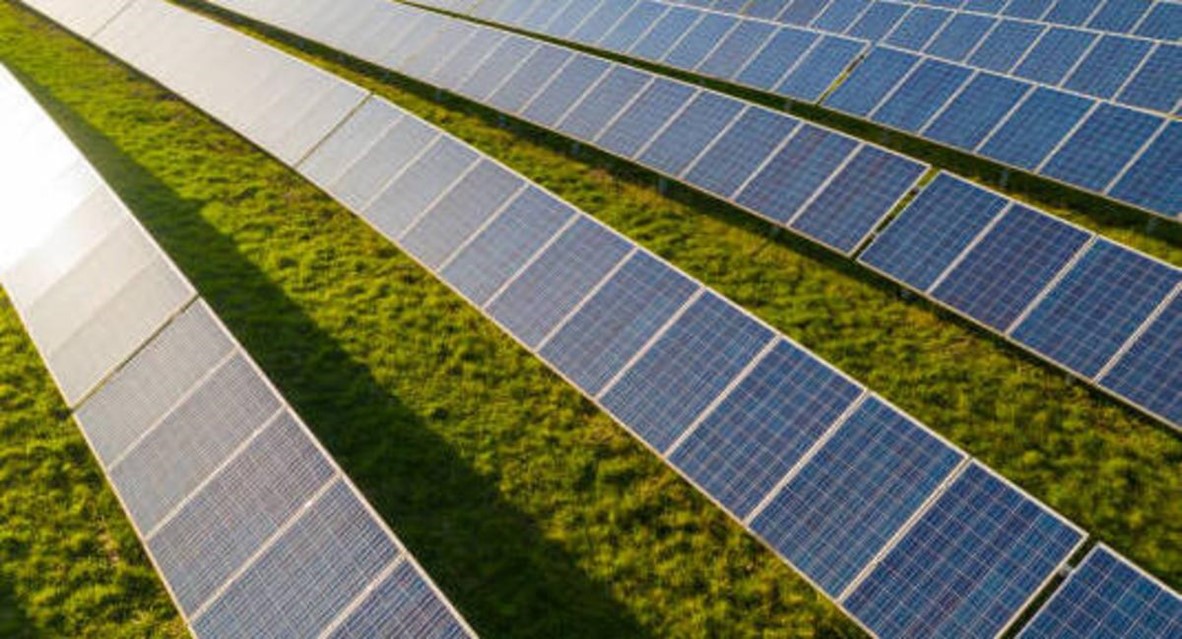
Bio-solar green roofs are a newer type of green roof. They integrate both greenery and photovoltaic (PV) panels to generate renewable energy. These roofs typically use a combination of vegetation and solar panels to maximize the energy output of the system.
Bio-solar green roofs feature a layer of vegetation, such as grasses or wildflowers, on top of a layer of soil or growing medium. The PV panels are then installed on top of the vegetation layer, either in a fixed position or using a tracking system to follow the sun’s movement throughout the day. For maintenance, they require regular inspections to ensure that the vegetation layer does not interfere with the function of the PV panels.
The Evolution of Green Roofs
Green rooftops are here to stay. According to a report from the market research firm, Technavio, the green roof market is set to increase by over $8 billion by 2027. This growth is led by countries like Germany, the United States, and Japan, which boast the largest markets for green roofs.
It’s only a matter of time before more countries adopt green roof technology. As the heat island effect becomes more unbearable and the reality of climate change sets in, more homeowners and architects will have to consider jumping on this sustainable roofing trend.
